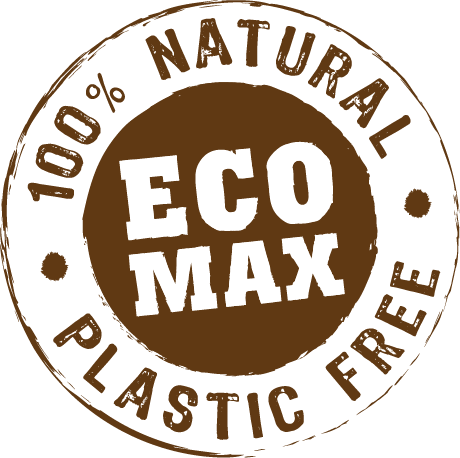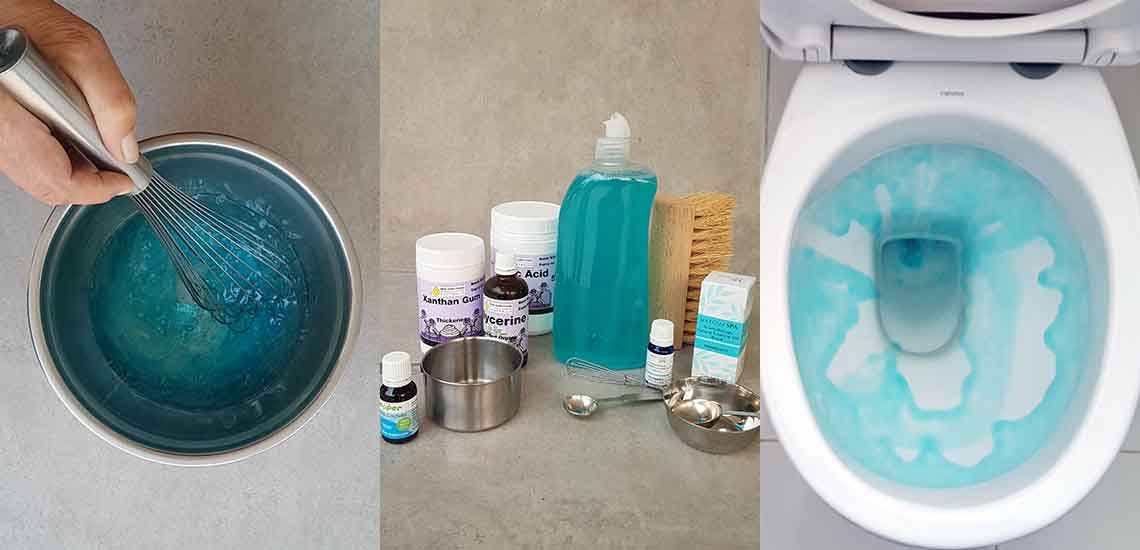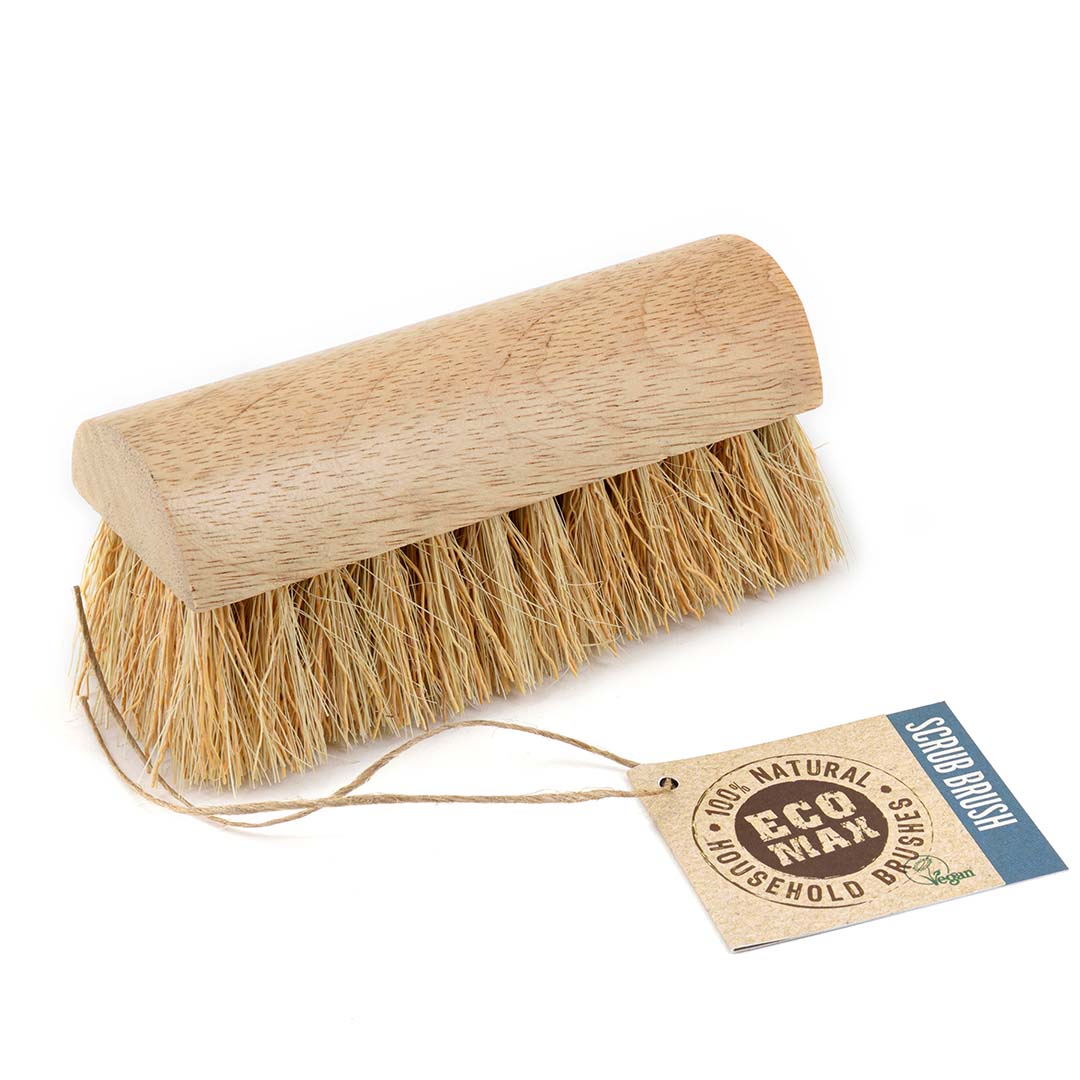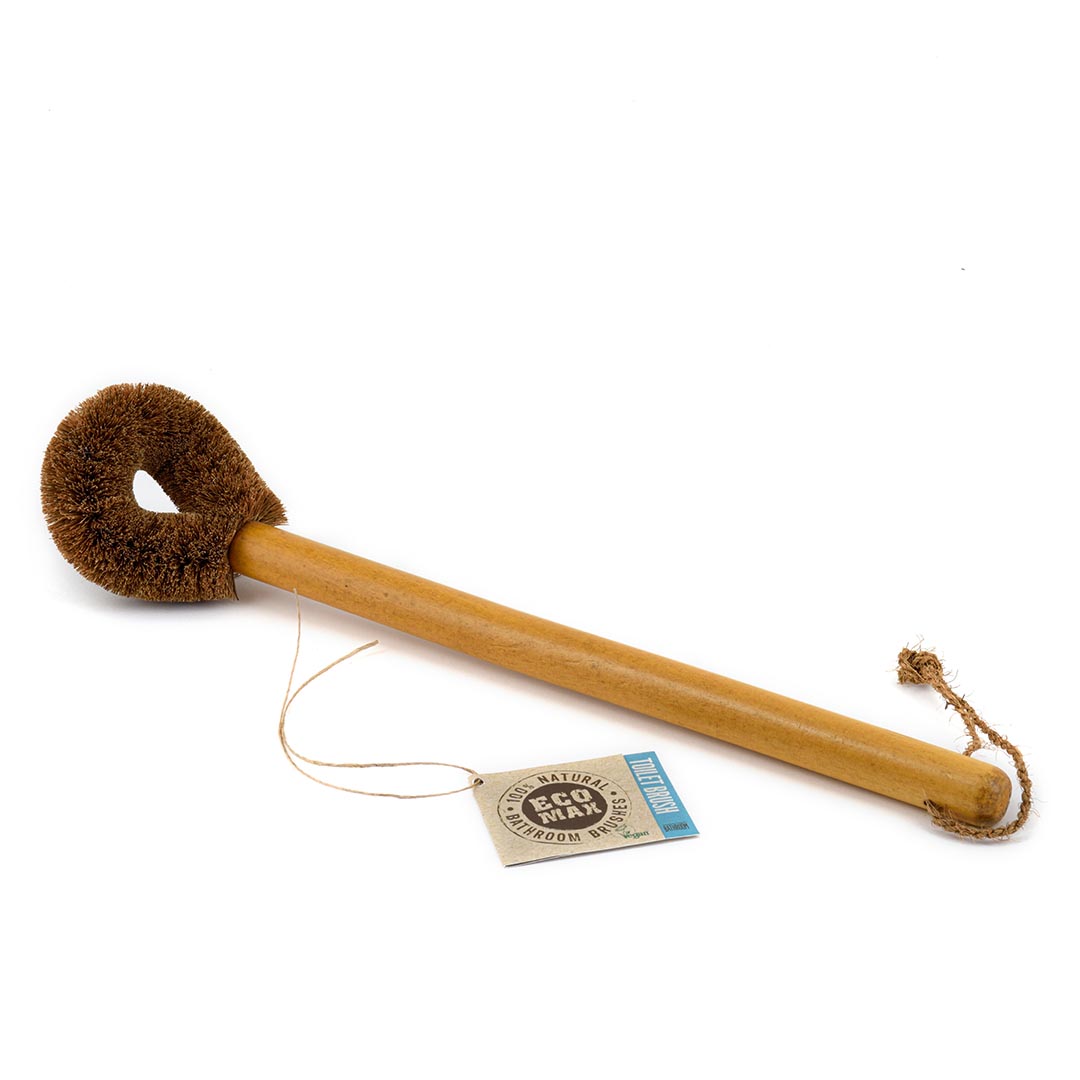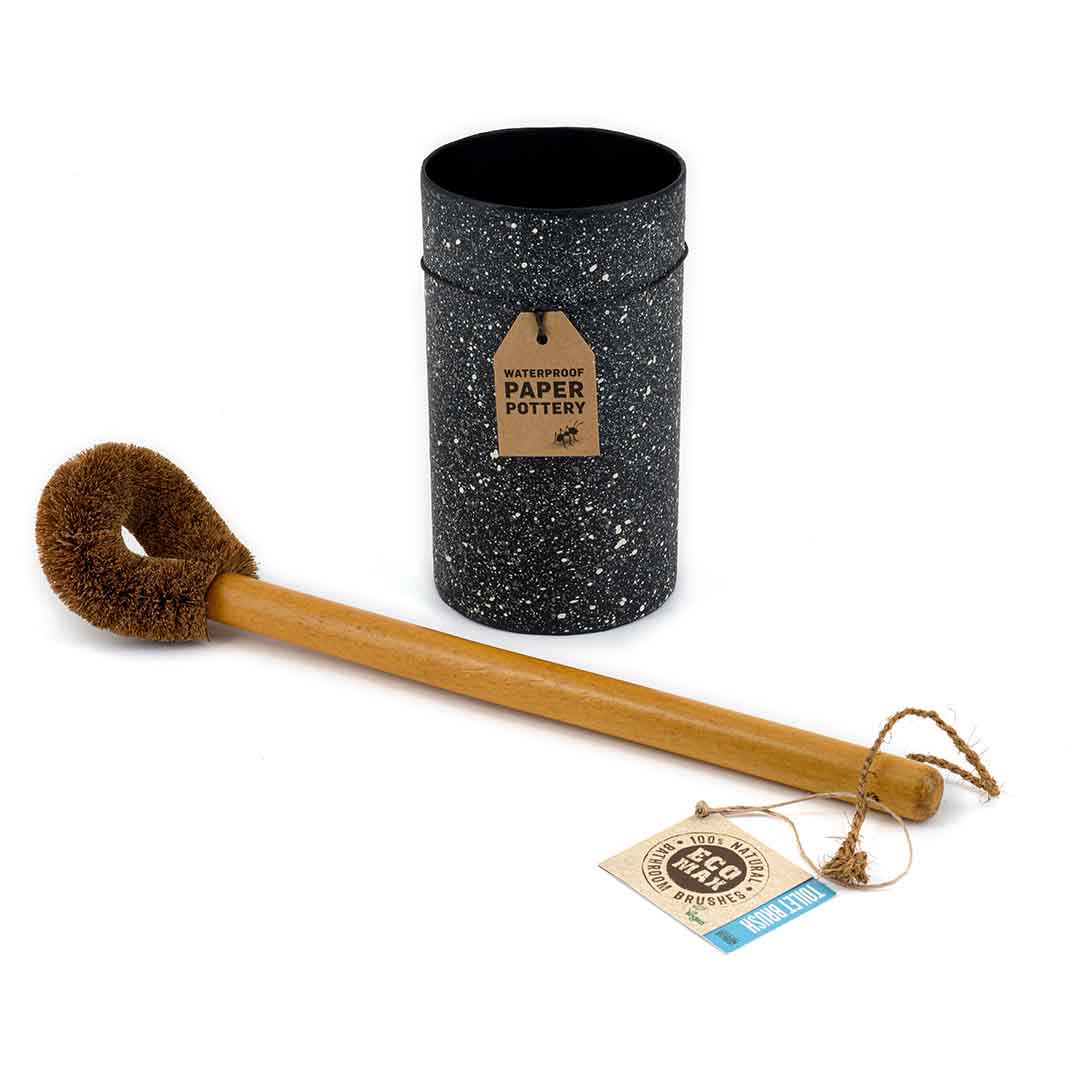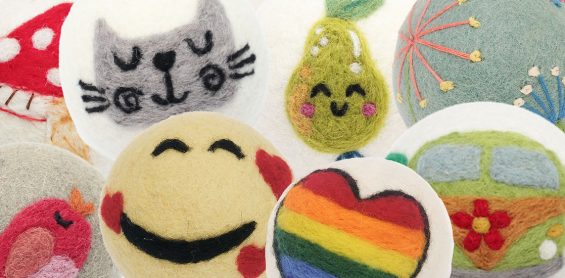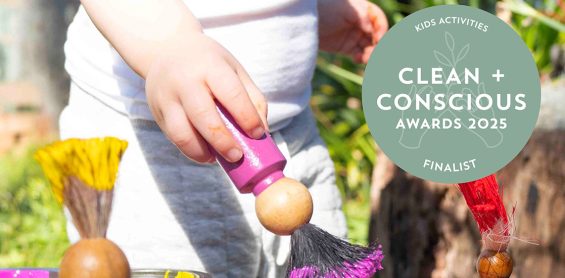We all want our toilets to be sparkling clean but how to achieve this without the cost to the environment? This No Tox toilet gel recipe from our friends at Blooming Mandela has all the stickability of a store bought gel with none of the harsh chemicals and it only takes a few minutes to make.
While researching the benefits of a diy toilet cleaner we turned up some interesting facts, namely – you might actually be cleaning your poopy toilets with poop😲 We also found some hidden environmental costs in toilet cleaners that you may not have thought about.
We investigated why the active ingredients in our gel work and what things to look out for when buying them. Yes there are pitfalls everywhere! By adding up the costs of the ingredients we have given you a price comparison, and included links so you can easily find where you can purchase the raw ingredients.
Our team have even been the Guinea Pigs for you, we have put their toilets to the test and compared how well Blooming Mandela’s DIY Gel works compared to a store brought gel cleaner.
Combine this DIY Healthy Cleaning Toilet Gel with our Eco Max Toilet Brush and our Waterproof Paper Pottery Toilet Brush Holder for a plastic and chemical free toilet that is not just clean, but creates a healthy room you can feel good about.
Healthy Cleaning Toilet Gel
What You Need
100g Citric Acid
400ml Boiling Water
1 tsp (about 15g) Xanthan Gum
1 tsp (about 15g) Vegetable Glycerine
5-10 Drops Essential Oil (Optional but makes your toilet smell really nice. We used our Fairtrade Tranquility blend of essential oil )
1 drop food colouring (Optional but does make it easier to see where you have applied the gel)
A squeezy bottle or reuse a cleaned empty squeezable bottle such as a toilet cleaner bottle, liquid detergent bottle or even a shampoo bottle.
What To Do
- In a small bowl mix the Xanthan Gum and Vegetable Glycerine together until well combined and put aside
- In a larger bowl whisk the boiling water and citric acid together until the citric acid is completely dissolved
- Grab the Xanthan Gum and Vegetable Glycerine mixture and add it to to the larger bowl with the water and acid, whisking to combine
- Add your Essential Oil and food colouring and mix well
- Leave to cool and thicken for a few hours
- Pour into your squeezy bottle and you are ready to get cleaning!
How To Use
Cleaning the Toilet – Squirt Gel into toilet bowl and spread around using your Eco Max toilet brush. Leave for 5-10 mins, give it a quick scrub and flush.
Cleaning the Shower and Bath – Squirt the gel and spread around using your Eco Max Scrub Brush. The bristles are great to clean grout. Leave for 5-10 mins, give it a scrub and rinse off.
Job Well Done
Price Comparison
$0.80 – Citric Acid 1kg $8.00 Blooming Mandela
$0.00 – Boiling Water
$0.75 – Xanthan Gum 100g $5.00 Woolworths
$0.13 – Vegetable Glycerine 500g $4.40 New Direction
$0.14 – Essential Oil I have used our own Fairtrade Tranquility blend 10ml $28.00
$0.02 – Natural Food Colouring 20 ml $6.95 Hopper
Total DIY – $1.84
Coles Ultra Toilet Gel – $2.30
The gels are comparable in price, however you can be sure that your DIY gel has no palm oil and uses citric acid instead of bleach, a much more eco-friendly alternative.
Who said being eco-friendly was more expensive?
Test Results
HOW TO MAKE – it was super quick and easy to make. Main thing to look out for is ensuring that the Xanthan Gum and Vegetable Glycerine are really well combined so you don’t get any tiny beads in the final mix. Not that they make much difference to how it works.
HOW IT LOOKS – it looks amazing, just like a store brought gel. A single drop of colouring is all you need and we loved how the essential oil made the bathroom smell beautiful.
HOW IT WORKS – this gel easily squirted around the top of the bowl and had just enough clinging power so that when the excess dripped down the bowl, you ended up with full coverage. After leaving it to work its magic for a bit, a quick scrub with the toilet brush was enough to dislodge any yucky marks. All in all it did an admirable job and as a bonus it also worked well for the whole bathroom, you can use it to clean the tub, the shower, tiles, anywhere really (though perhaps it is best to omit the colouring if you do use it near any porus materials such as grout).
A recent Choice product review on toilet cleaners found that several popular supermarket toilet cleaners performed worse than using just plain water, we give our DIY gel a better than water tick of approval, don’t fall for the slick marketing on supermarket products, make your own, save money and know what ingredients you are exposing your family and the environment to.
Why it Works
& Things You Need to Know
There are essentially 3 main ingredients in this recipe, one of which can have major hidden negatives. We have looked at these ingredients and the things to look out for when buying them, which is the sort of information you won’t find on commercial products.
Citric Acid is the main ingredient in this DIY toilet cleaning gel. The final product is approximately 20% citric acid solution which gives this gel its wicked cleaning power. It is a very good cleaning agent for removing soap scum, hard water stains, lime, and rust as well as being a useful disinfectant.
Xanthan Gum is used as a thickening agent and as a stabilizer to prevent separation of ingredients and gives the gel it’s stickiness. It is a sugar (polysaccharide) secreted by the bacterium Xanthomonas campestris, which basically means that xanthan gum is pooped by a bacteria! The same bacteria that is responsible for causing black rot to form on broccoli, cauliflower and other leafy vegetables! What I am trying to say is that you are cleaning poop with poop!
Here is the tricky one! Vegetable Glycerine also known as glycerol, it is typically made from soybean, coconut or palm oils. Glycerine is used in this recipe to help mix the oil and water-based ingredients, stop them separating and to soften the Xanthan Gum. Many of the cheapest vegetable glycerines are made from Palm oil. Even when buying vegetable glycerine the packaging does not state what vegetable it is made from, this includes the ones available in supermarkets. We asked Melrose what theirs was made from and they replied via email that it was made from soy. Cenovis rang me and refused to tell me what their vegetable glycerine was made from which makes me think that that it may be made from Palm Oil. We used a soy glycerine from One Direction for our gel as they were local and we could pick up the ingredients. We did find one made from coconut oil at Eco Warehouse which would add a little more to the cost for the gel at $0.52 compared to $0.13 worth in the recipe.
Food Colouring, although we didn’t need to choose a natural food colouring as no one is going to eat the toilet gel (we hope), we chose to spend that tiny bit extra as this will end up in our oceans. You can of course choose not to use colouring at all.
Let us know if you liked this recipe as much as we did and check out some of Blooming Mandela’s other great DIY Recipes.
